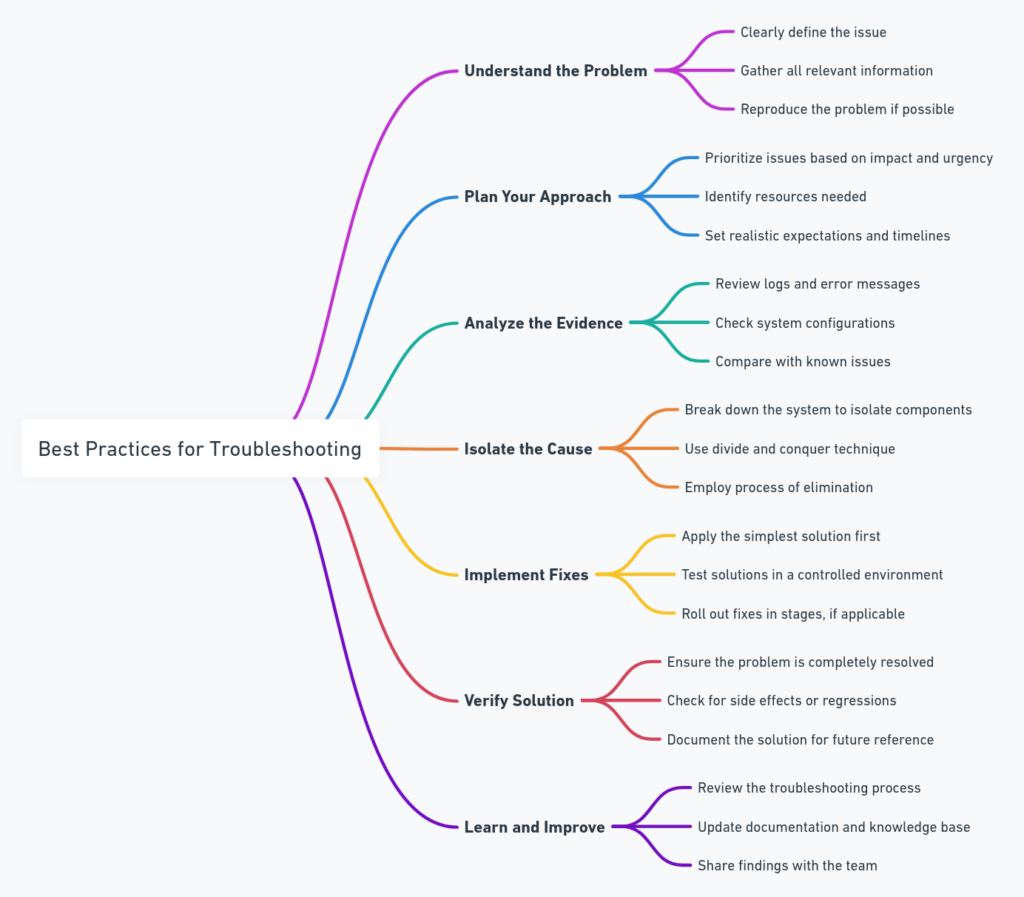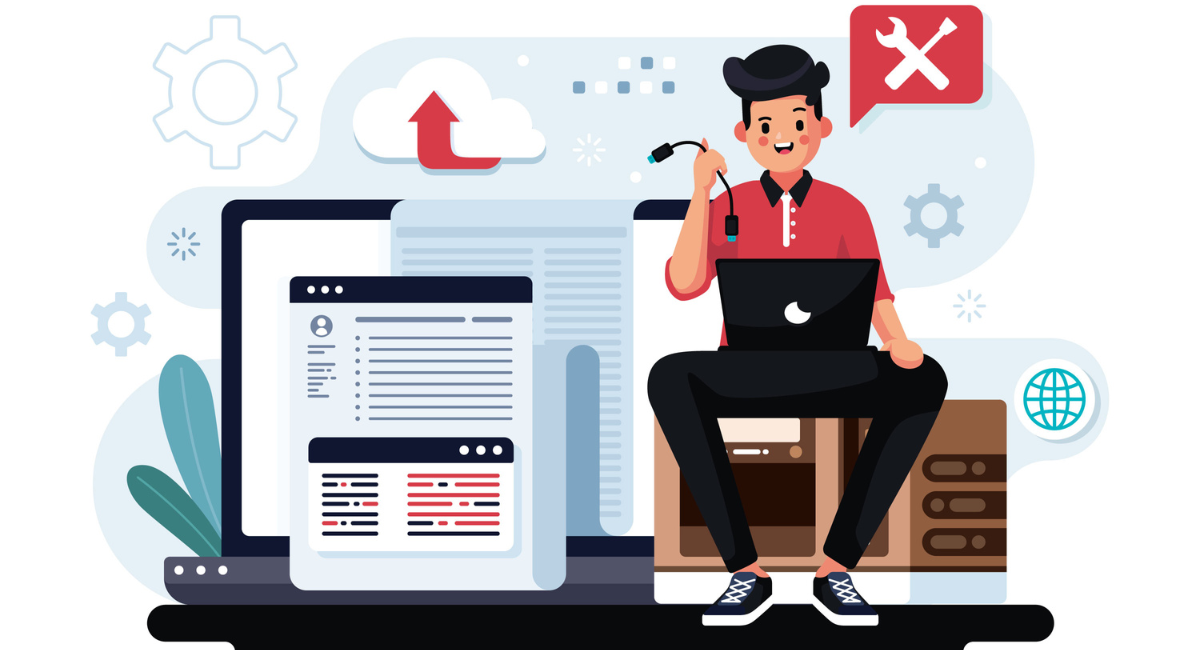Debugging is a vital ability that developers should be able to master in order to ensure the smooth operation of their websites and apps.
No matter if you're a professional or just starting out as a new developer, knowing the fundamentals of troubleshooting could save you many hours of frustration and keep the level of work you do.
This blog is designed to teach the most fundamental strategies to identify and Debugging issues with the back-end as well as front-end.
From utilizing tools for developers effectively to comprehending server logs We will guide you through the most important methods to be proficient at diagnosing.
Be prepared to embark on an easy method of debugging that will not just enhance your development workflow, but will also improve the efficiency and satisfaction of the projects you work on.
Understanding Front-End and Back-End Debugging Issues
Debugging is an essential component of the process of development whether you're working in the front end (the aspect of the application which customers interact with) as well as the back end (the server-side which processes the user's requests).
Knowing the various techniques that are that are applicable to these areas will help you troubleshoot your problems and result in more efficient and effective resolution of problems.
Front-End Debugging Techniques
Front-end debugging is the process of the identification and correction of issues with your user's interface as well as user experience.
Some essential techniques include:
- Utilizing browser developer tools to look at HTML as well CSS and alter them in real-time, allowing you to observe the impact instantly.
- Debugging JavaScript by using breakpoints, you can halt the execution of code and examine variables.
- Testing responsive design to ensure that web-based applications are compatible with different screens and devices.
- Utilizing console logs to report errors or variables that allow you to identify the specific location of a problem.
- Simulation of conditions on the network to see the way your application performs with different internet speeds or even offline.
Back-End Debugging Techniques
Debugging back-end issues, on the contrary is a different process when dealing with servers, databases and APIs. Methods to troubleshoot issues with the backend include:
- Logging into the server to detect unusual activity or errors that could reveal where the issue is.
- Interactive debuggers let you go through the code, line-by-line, to be able to observe the flow of execution and the status of variables.
- Implementing unit tests to test each part of the code for accuracy.
- Perform API testing using instruments that simulate requests to your backend service to see if they respond.
Tools for Efficient Debugging
To effectively tackle problems with the front and back end developers use the various tools created specifically for these jobs.
Front-End Debugging Tools
Many tools can assist in making front-end debugging more achievable task -
- Browser developer tools which are included in every modern browser, such as Chrome, Firefox, and Edge essential for studying and editing HTML, CSS, and JavaScript in real-time.
- Framework-specific tools, such as React Developer Tools or Vue.js development tools that give insight specific to the applications that are built using these frameworks.
- Testing platforms for cross-browser compatibility like BrowserStack or Sauce Labs that allow you to test your website's behaviour across different devices and browsers without physical access to them.
Back-End Debugging Tools
For developers who work on the back end the toolset appears a little different, but it is equally vital:
- Integrated Development Environments (IDEs) such as Visual Studio Code, IntelliJ IDEA and PyCharm with powerful tools for debugging and plug-ins specifically made for back-end languages.
- The application includes Postman and Swagger for API testing. It allows developers to send request to the backend service and check the response without the requirement for an interface on the front.
- Docker, which allows you to locally replicate environments, allowing you to spot and fix problems that aren't present when working in a development.
- Using these tools and techniques will significantly improve developers' ability to swiftly and effectively address back-end and front-end issues which can lead to more robust and robust applications.
Best Practices for Troubleshooting

In the case of troubleshooting, whether the front or the back end, having a logical method is crucial. Debugging software issues may seem like searching for an unidentified needle.
Utilizing the best practices will significantly reduce the amount of time spent and make debugging easier and efficient.
Front-End Troubleshooting Tips
Front-end development, which is the web page which users use, could pose unique issues. Here are some suggestions to help you troubleshoot issues with front-end development:
Utilize Developer Tools
The latest browsers have built-in tools for developers, which can be extremely useful in debugging. Tools like the Elements panel to check HTML and CSS as well as the Console for JavaScript errors as well as the Network tab to look into requests are able to pinpoint a variety of issues quickly.
Check for Cross-Browser Compatibility
What works with one browser may not be compatible in another. Testing cross-browser compatibility tools can assist in identifying and resolving these problems.
Responsive Design Testing
Utilize devices to evaluate your site on various screen sizes. This will ensure that your website offers the same user experiences across different devices.
Validate Your Code
Make use of HTML as well as CSS validators to determine for mistakes in your code which could be causing the problem.
Back-End Troubleshooting Tips
Back-end development is concerned with the server side of things, which is more difficult to identify because it is not visible to the user. Here are the best practices for efficient debugging at the back end:
Check the logs
The server logs may provide information about what's happening behind the behind the scenes. Check for errors or unusual patterns that may be a clue to the source of the issue.
Debugging Software as well as IDEs
Integrated Development Environments (IDEs) as well as other tools for debugging provide tools like breakpoints and variable inspection. These tools are extremely helpful in determining the cause of error.
Automated Testing
Using automated tests will help to catch bugs earlier during developing. Integration testing, unit testing and end-toend testing may all contribute to making sure that your back-end.
Understanding the Stack
Understanding the technology stack you're working on deeply can be extremely helpful in identifying problems quickly.
Common Pitfalls to Avoid
While debugging, stay clear of the most common pitfalls that may delay the process:
Don't duplicate the issue
Make sure you are able to duplicate the issue in a consistent manner before you attempt to fix it. This aids in understanding the problem in full.
The Basics aren't being understood
The issue may be due to something as easy as a missing semicolon or a wrong path to the file. Make sure you are aware of the basics before embarking on more complicated troubleshooting.
Not Considering External Dependencies
Be sure to take into account external dependencies such as APIs, databases, or any third-party service. These issues can be reflected in your code.
Do not document the process
Do not forget to record the process of debugging and the solution. This is not just helpful in future troubleshooting, but can also help in sharing knowledge among the team.
Real-Life Examples and Case Studies
Utilizing real-world instances and case studies on debugging can give valuable insight in learning and opportunities for improvement.
Let's consider a few illustrative scenarios:
Front-End Issue
A business discovered that their website wasn't showing properly in mobiles. When they investigated using tools for testing responsive design.
It was found that CSS media queries had not been configured, resulting in problems with layout. Modifying the media queries according to screen sizes was the solution the issue.
Back-End Issues
An online marketplace saw sudden spikes in the response time to servers, which led to pages that were slow to load.
Through analyzing logs of the server and performing performance profiling to determine the cause, it was found out that a recent deployment of code was introducing an unreliable database query.
The optimization of the query as well as the addition of caching techniques significantly improved time to respond.
These real-world examples highlight the importance of taking a systematic approach to troubleshooting.
Through embracing the best methods and learning from past experiences, developers are able to efficiently solve issues with the front and back end and ensure a smooth user experience as well as a robust performance.
Book a Demo and experience ContextQA testing tool in action with a complimentary, no-obligation session tailored to your business needs.
Conclusion
Debugging is an essential ability in the field of software development, both on the front end as well as the backend.
It requires a rational approach as well as patience and an understanding of tools and techniques you have at your at your disposal.
By following the methods that are provided for troubleshooting back-end and front-end issues developers can dramatically cut down the amount of time and stress associated in identifying problems and fixing them.
Be sure to:
- Fully understand the issue before attempting to find solutions.
- Utilize the potential of debugging tools as well as environments efficiently.
- Consider the effect of changes on the overall application.
A systematic approach to debugging can turn it from a daunting job to a chance to improve and learn.
No matter if you're a beginner or an experienced developer constantly improving your debugging abilities will make you more efficient and productive in your programming projects.
Happy debugging!
Also Read - Becoming an SDET / QA Automation Test Engineer Road Map Step By Step This Year
We make it easy to get started with the ContextQA tool: Start Free Trial.
